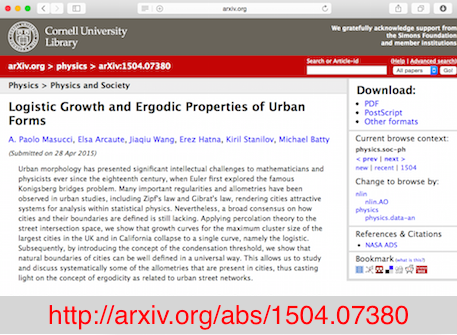Urban morphology has presented significant intellectual challenges to mathematicians and physicists ever since the eighteenth century, when Euler first explored the famous Konigsberg bridges problem. Many important regularities and allometries have been observed in urban studies, including Zipf’s law and Gibrat’s law, rendering cities attractive systems for analysis within statistical physics. Nevertheless, a broad consensus on how cities and their boundaries are defined is still lacking. Applying percolation theory to the street intersection space, we show that growth curves for the maximum cluster size of the largest cities in the UK and in California collapse to a single curve, namely the logistic. Subsequently, by introducing the concept of the condensation threshold, we show that natural boundaries of cities can be well defined in a universal way. This allows us to study and discuss systematically some of the allometries that are present in cities, thus casting light on the concept of ergodicity as related to urban street networks.
Mainly Based on my Lectures on Models, Complexity, and Smart Cities at ASU, CUHK, CUSP at NYU, Ritsumeikan, SUFE-Shanghai, Tel Aviv, and UCL, with blogging odds and ends thrown in for good measure









